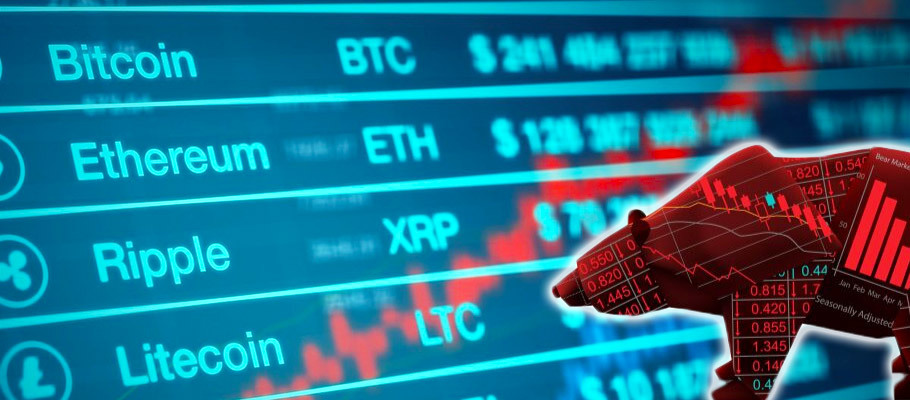
Published: January 6th, 2020
– The year began on a tricky note for the cryptocurrency market as Bitcoin and most major altcoins slipped into the red zone. The world’s first cryptocurrency, for instance, dove down to $7050 after the market rejected its earlier 200-period average over a four-hour trading duration. Is the recent recovery sustainable?
The past few weeks coming into the new year, the price of Bitcoin hovered around the neighbourhoods of $7,000. All this while, it seemed unable to make a meaningful move in whatever direction save for the few occasions it dipped to the mid-$6,000.
On several trading exchanges, the BTC/USD shorts have been at their highest since mid-December 2019 while the BTC/USD longs have been at their weakest. Even Bitcoin Cash, which initially seemed the most stable of the top five currencies going into December 2019 slid towards $200 and is now the worst-performing having shed some 2.5%.
The dip in the price of most cryptocurrencies also saw the overall market capitalization bleed out some $2 billion to stand at $184 billion.
Bitcoin has rallied to trade at $7,524.30 according to the figured provided by Morningstar on January 6, 06:15 UTC. This is after having slipped below the $7,200 to the $7,100 support level. There were fears in the market that any dive or consistent trade below $7,250 would mean the cryptocurrency is vulnerable and bound to drop even further.
The recent rise, as such, has the makings of a bullish reversal pattern. Markets now support the prediction that the highlights of a lower time frame may see the coin rally to $8,000 and above. It is a welcome premise which also means that the Bitcoin’s recorded December low of $6,450 will stay as such.
The downside potential, on the other hand, may present a bearish break with sales below the $7,000-mark. Should that happen, a heavy technical sale of BTC/USD towards the $6,780 support level may be witnessed.
Despite the flux, a section of the market feels that the overwhelmingly negative outlook that saw the dip in price towards the end of 2019 is unjustified. The data available suggests that such sentiments are brought about by the unrealized and unrealistic expectations most traders had. This is probably fostered by the grief that the all-time high earlier predicted is not coming soon enough.
Another factor worth considering is the overall performance of the cryptocurrencies year-on-year. Despite the downturn witnessed during Q2 of 2019, Bitcoin finished the year up 90%. Ethereum, which had a somewhat dismal show, dipped only 6% overall.
According to the latest research conducted by Coin Metrics, price is not an accurate factor for measuring the true situation in the cryptocurrency space. It turns out that volatility, one of cryptocurrencies’ downside, has declined across the board. Besides, adoption has increased among all the major assets. A survey on active cryptocurrency addresses shows that Bitcoin users have increased by 16% while Bitcoin Cash and Litecoin coin holders are up by 90% and 12% respectively.
Other factors look just as bright. The health and security of a cryptocurrency, for instance, which depends on mining, is upbeat across almost all networks. Miners do it for the monetary incentives. As long as there is money, therefore, miners will keep devoting increased computer power to the networks. This, in turn, secures the networks.
Using mining as a gauge, it is safe to assume that the cryptocurrency networks are doing great. Bitcoin, which leads in cumulative hash rate, recorded positive gains not only in the annual hash rate but also in the transaction fees as well as newly issued coin supply.
In light of the above argument, another pointer to the strength of the market is the capitalization and the stability that it wields. Of course, this factor is a direct product of the price of the various coins in the market and the total units in circulation.
At $187 billion at the beginning of the year, the market capitalization of cryptocurrencies seems increasingly bearish. However, market pundits predict that transactions that take the price around the $180 billion support level may trigger a downside target. That, notwithstanding, only figures above $207 billion may ignite a bullish reversal pattern, with the $230 billion levels becoming the possible upside target. The next few weeks will determine if this comes to pass.
There is no doubt that the cryptocurrency space is growing rapidly. Despite the growth, a moderate level of fear has been noted as well. The Crypto Fear & Greed Index, a measure of the general market sentiments from various data points put the fear level for the past six months at between 20% and 40%. This probably is the reason there are oscillations in the price of bitcoin as noted above.
The fear, notwithstanding, the market seems to be bracing for a bright 2020. Bears seem to be in control and the level of optimism witnessed seems to have subdued the effects of a price fall.
The whales have also increased. This crop of entrants shows a preference for Bitcoin and Ether. By the end of 2019, there were 11,000 BTC addresses and about 1,800 ETH addresses that had more than $1 million.
The significant economic activity across major cryptocurrency assets as depicted by these figures points to a bullish story. Transfers, transactions, and adjusted transfer values have all increased. The most notable statistic in the space of the three factors probably is the USDT – ETH whose transaction count rose 59-fold in just 12 months.
Going into the new year, the cryptocurrency markets may seem a little confusing; the oscillations are noticeable albeit not sharp. However, it is also clear that there is noticeable growth behind the scenes. The gains, both existing and anticipated seem to have outweighed the market’s fear sentiments. Going into February 2020, as such, more growth may become apparent.